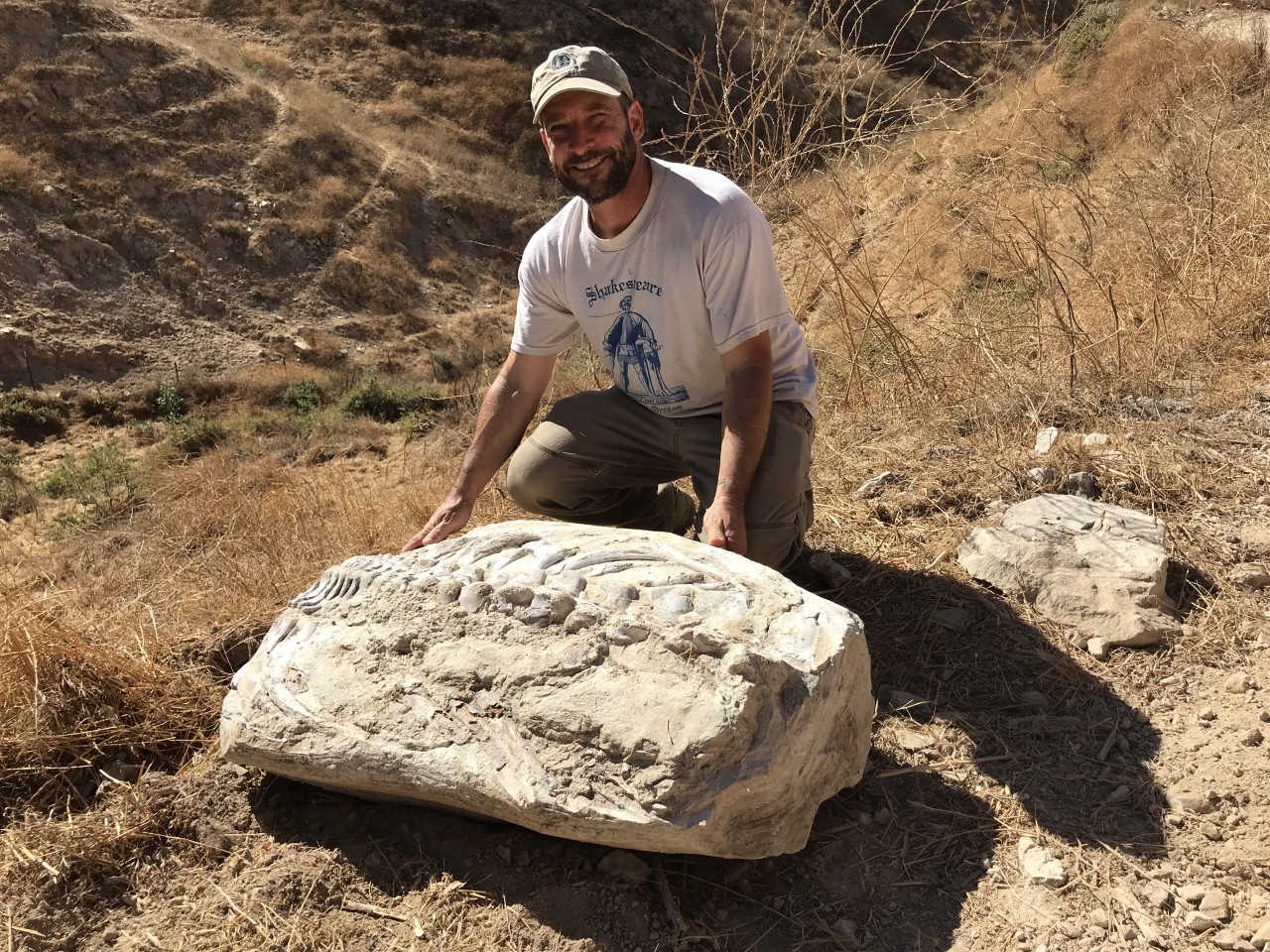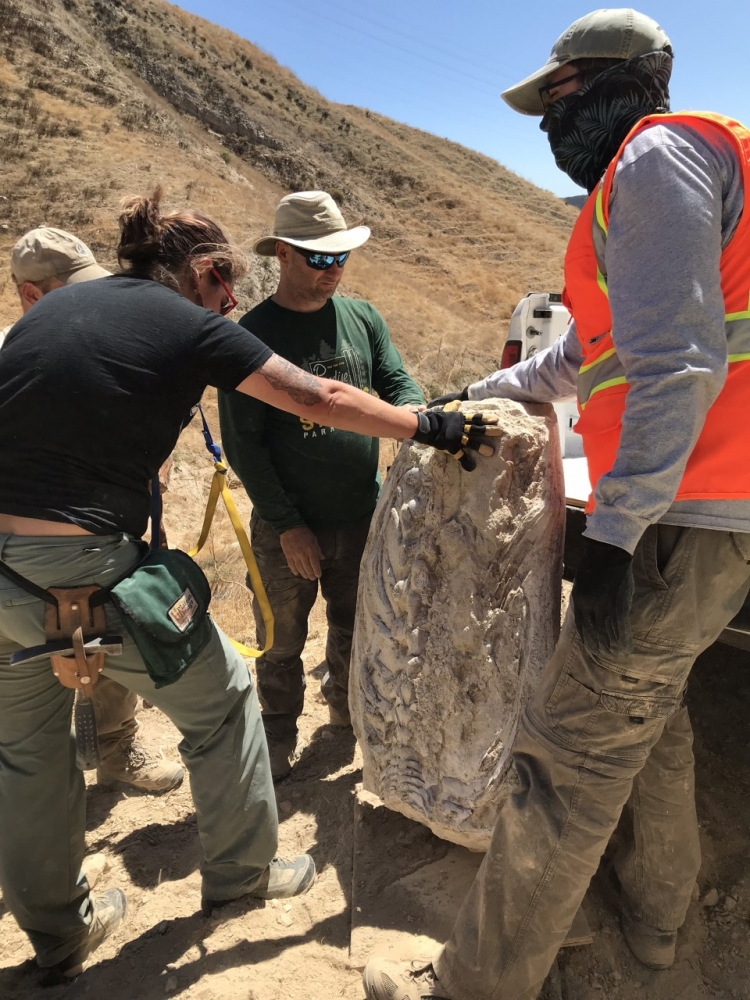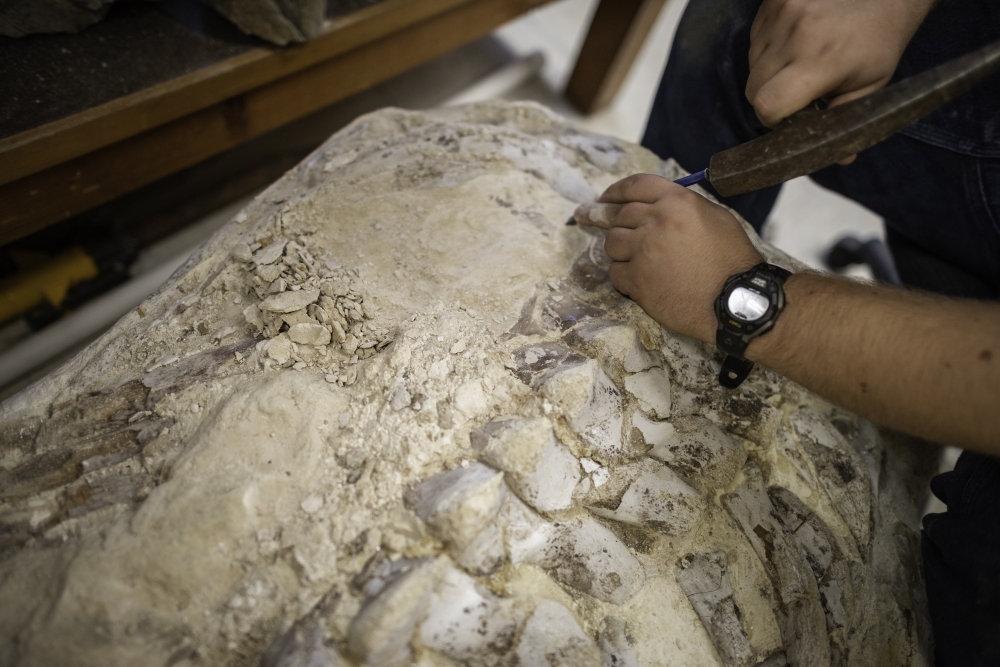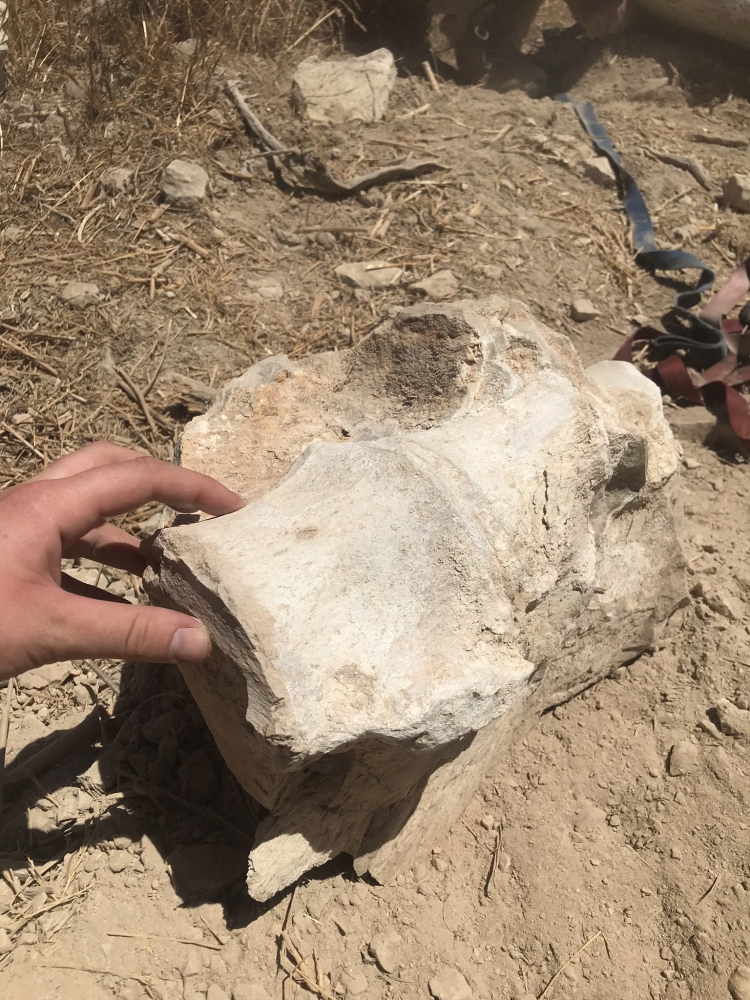No Bones About It: Fossil Find a Whale of a Mystery

Russell Shapiro poses with the found 15-million-year-old whale vertebrae fossil in Simi Valley.
Earthquakes often happen in California, this is a fact. Some are too small to feel, and others are powerful enough to crack roads and level buildings. No one expects these natural occurrences to uncover a mystery. But that is exactly what happened during the 20 seconds a 6.4-magnitude earthquake rocked the Mojave Desert on July 4, 2019.
Much like an apple falling from a shaken tree, what appeared to be a 600-pound white rock was dislodged from a cliff in Tapo Canyon and tumbled onto a private road in Simi Valley. A utilities crew monitoring the area following the earthquake was quick to realize it was no rock at all, but instead a large fossil. Since fossils are under federal protection, the crew left it in its place and, with permission from the landowners, sent a picture to the Pasadena office of SWCA. The nationwide environmental consulting firm then tapped an expert—Chico State’s Russell Shapiro, a professor of paleontology and stratigraphy in the Department of Geological and Environmental Sciences.
Shapiro, who has been a paleontology consultant for SWCA since 2014, said he took one look at the picture and knew the crew had found something of value, but what exactly? He had to have a closer look.

Chico State happens to be one of the few institutions in the North State that is federally sanctioned to collect and store fossils—along with UC Berkeley, California Academy of Sciences, and Sierra College. In this case, Chico State was fortunate to be the only one with room to house these special Monterey formations, giving Shapiro and the University the first chance to figure out what was discovered.
A small dig team consisting of four volunteers from SWCA, Shapiro, and Todd Greene, a professor of sedimentology and stratigraphy and chair of the geological and environmental sciences department, assembled in Simi Valley for one day. It didn’t take long for the team to determine that the large fossil was an estimated 15-million-year-old chunk of vertebrae and ribs from a possible small whale from the Miocene era, Shapiro said.
Other fossils found at the dig site echoed that finding. As cool as fossils are, this set is not an “earth-shattering” discovery, Shapiro said, since California was once submerged under the ocean water and whale fossils are not an uncommon find. But his mystery was not yet solved.
The oddity of the some of the smaller formations, appearing to be ribs, seems to stump Shapiro. He hypothesizes that even though all the fossils were found in the same vicinity, they might not all be from the same animal.
“The biggest clue is that the cervical vertebrae (on the largest fossil formation) are collapsed. That’s a characteristic of whales,” he said. “The problem is that typical whale ribs are kind of long and flat—and these (smaller fossil formations) are round. I don’t know why they would be round. This is a big deal.”

Shapiro toys with the idea that the formations belong to both a mother whale and her baby, which would “make a nicer story,” he said. After significant progress prepping and strengthening the fossils, countless hours of carefully chiseling the bones out of rock still lay ahead of Shapiro and a lucky handful of students chosen to work on the project in the University’s Thin Section Lab before they could truly start to piece together the puzzle.
However, the skull of the large fossil formation was never found—making it almost impossible to identify the animal with absolute certainty.
“We really have to clean it out to be able to tell more, unfortunately,” Shapiro said. “What we really need is the head, which would have been [attached to the recovered vertebrae]. If we had the head, all answers would be instantly known.”
Greene, who has partnered with Shapiro on several digs throughout their careers, lent his geological expertise in marine sediments to give the team predictions on where else to look for more fossils, based on the location of the cliff from where the large formation fell. With his expertise, they ultimately found almost a dozen fossils.

But without the skull, the mystery continues. Since it was discovered on a private road, it’s up to the property owners if it will ever be found, Greene said. No word from the owners has been given, but both Shapiro and Greene are hopeful they will get permission to return to the site and search for their answer.
“That large formation has such a rich fauna in it, and where you can find fossiliferous sites—you concentrate on that,” Greene said. “It would be great to go back, if allowed, and see what else we could find. We need to find the skull.”


